The project establishes a powerful visual link and important thematic and historical connections to the UN headquarters directly across the river.
Franklin Delano Roosevelt delivered his Four Freedoms Speech to establish a universal defense of liberty during the lead-up to the US entry into WWII. After the war, Eleanor Roosevelt chaired the committee that wrote the Universal Declaration of Human Rights, one of the first and most important products of the United Nations. The Four Freedoms are embodied in the preamble to the Universal Declaration.
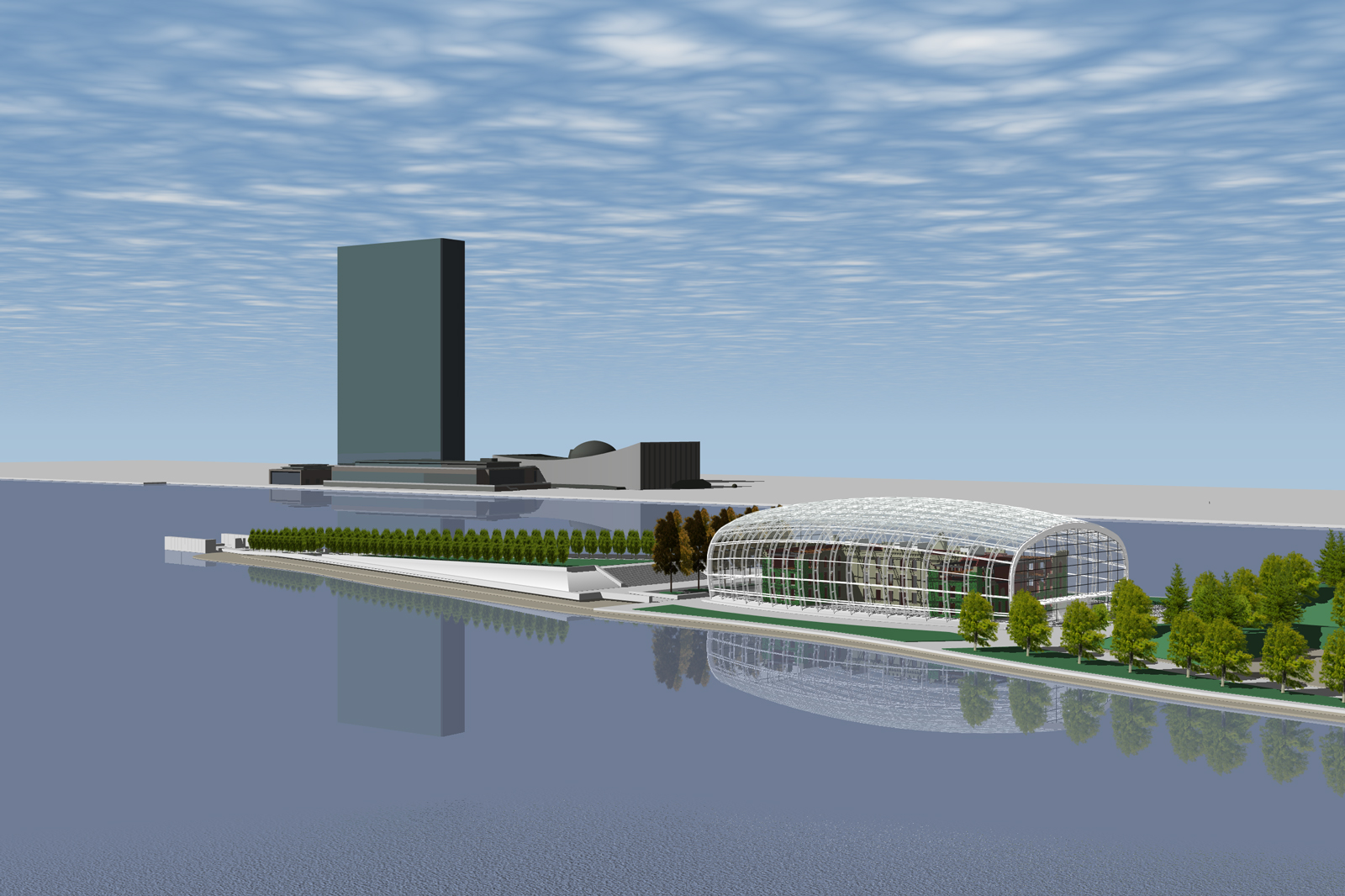
The existing ruin will be enveloped by a transparent, crystalline enclosure, a simple and elegant solution to preserving the deteriorated building while allowing for its repurposing and expanded use without painstaking and costly reconstruction.
The enclosure is configured as a regular volume set on axis with the Four Freedom’s Park, in harmonious coexistence with the great Kahn project. It creates a new architectural element in the landscape, mediating between the monumental scale of the Four Freedoms Park and the more diminutive Renwick smallpox hospital.
Two new pedestrian routes are established to complement the already existing ones. One proceeds along the central axis through Southpoint Park, into and through the CFHR, and then continues up Kahn’s monumental stairs and onward to the monument. The alternative paths along the east and west shoreline of the island pass through the parterres, connecting to the two legs of Kahn’s triangular park.
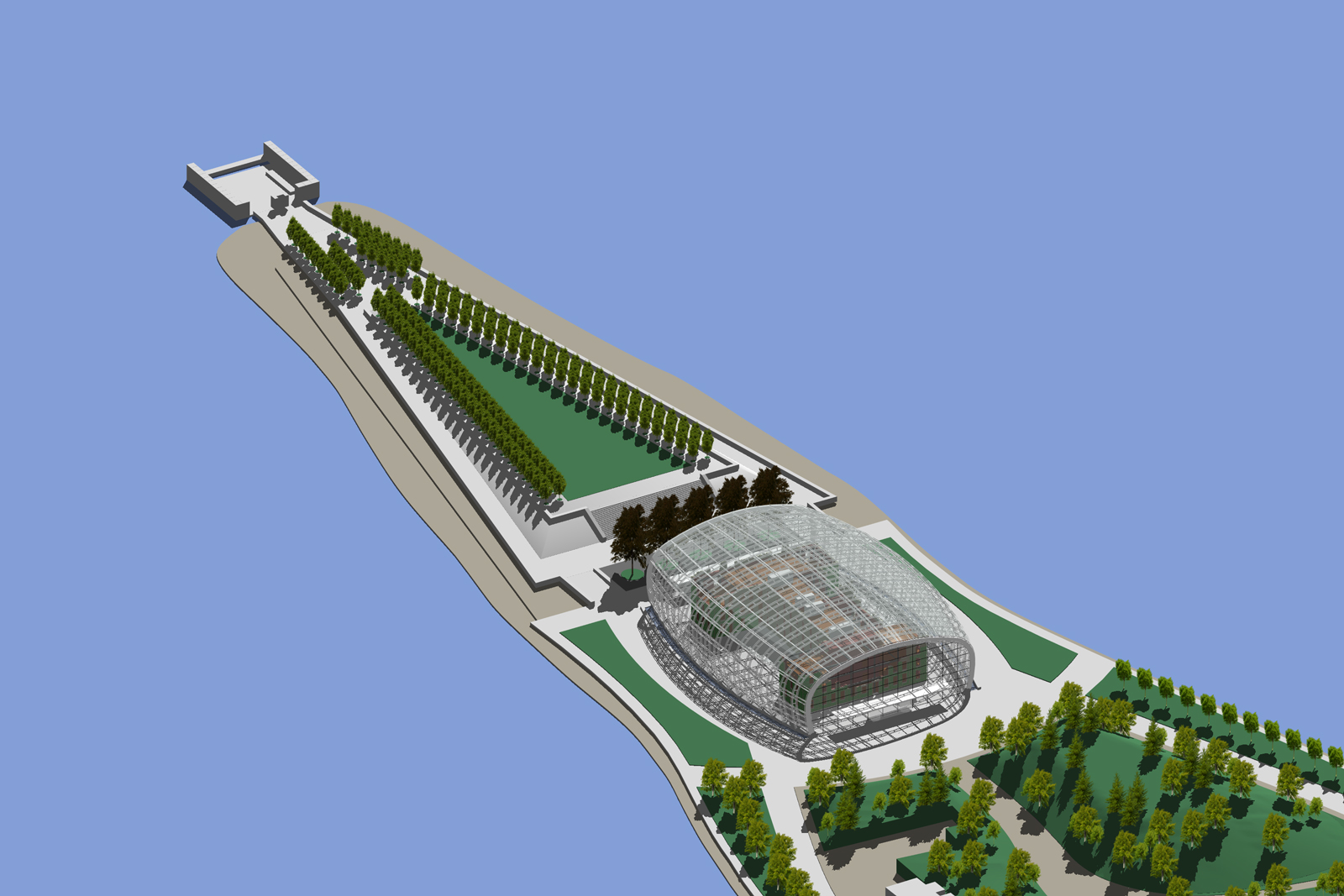
A gradation of public, semi-public and private spaces is created by the presence of the enclosure and ruin. A new north plaza creates an appropriately scaled forecourt to the entire complex. Entry to the CFHR is along the North-South axis, allowing the public to use the enclosed space without entering the building itself. Seating, temporary exhibitions, café and performance space are located here. The repurposed ruin is entered as originally intended, from the east or west. The south plaza acts as an entry court, with the screen of Copper Beech trees also framing the main entrance to the Four Freedoms Park. The parterres on the east and west will be planted with low, seasonal plantings. Narrow water basins frame the edge of the building.
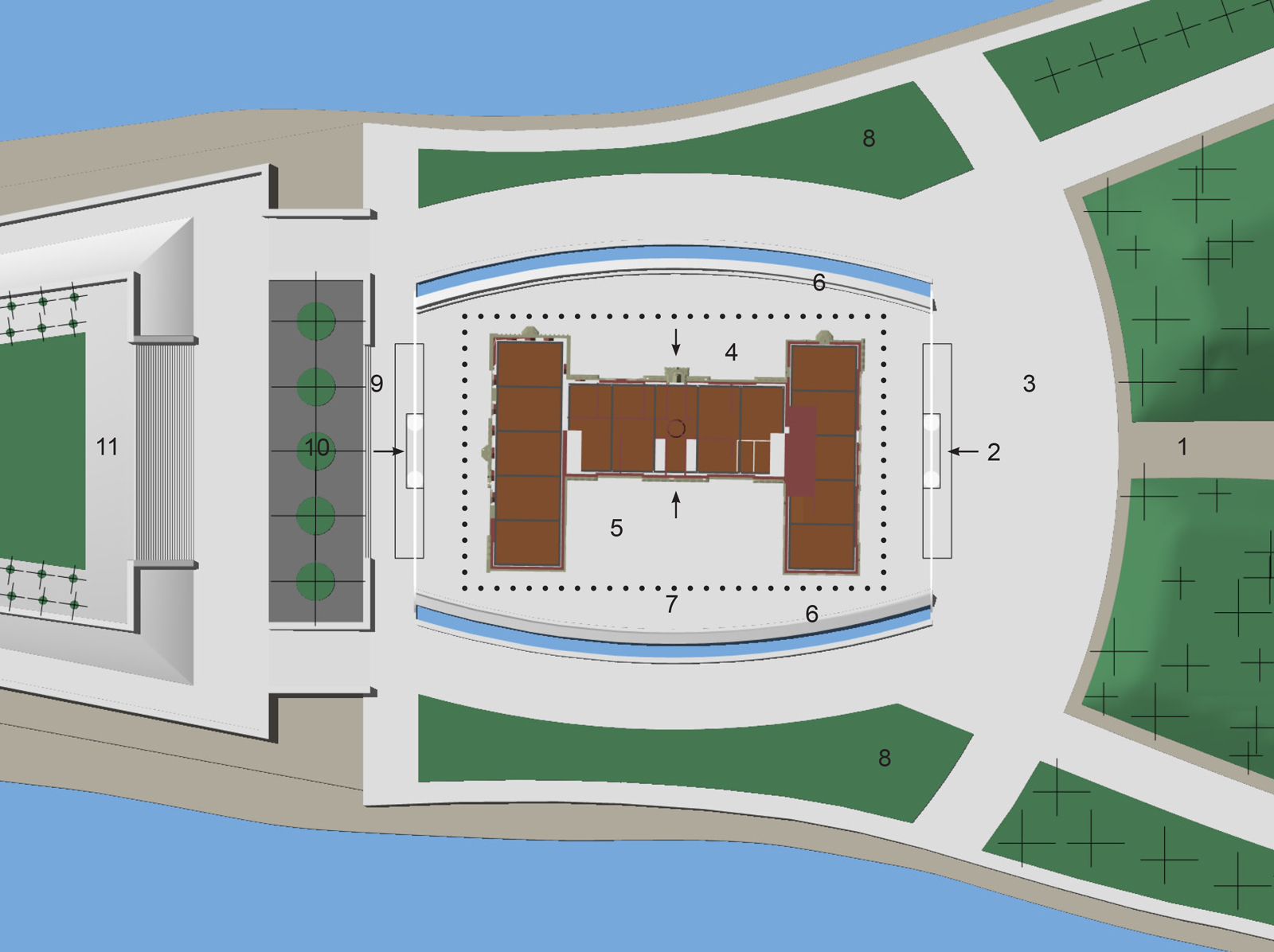
The former smallpox hospital will become the background for a “scaffold” supporting the new functions to be inserted within it. In addition to its educational program, the building will house administrative offices for the Four Freedoms Park, a small bookstore and café, library, performance space, as well as offices of an NGO. The building will be a net-zero energy user and will provide power and irrigation for the surrounding park. Green overgrowth will flourish in the newly enclosed environment.
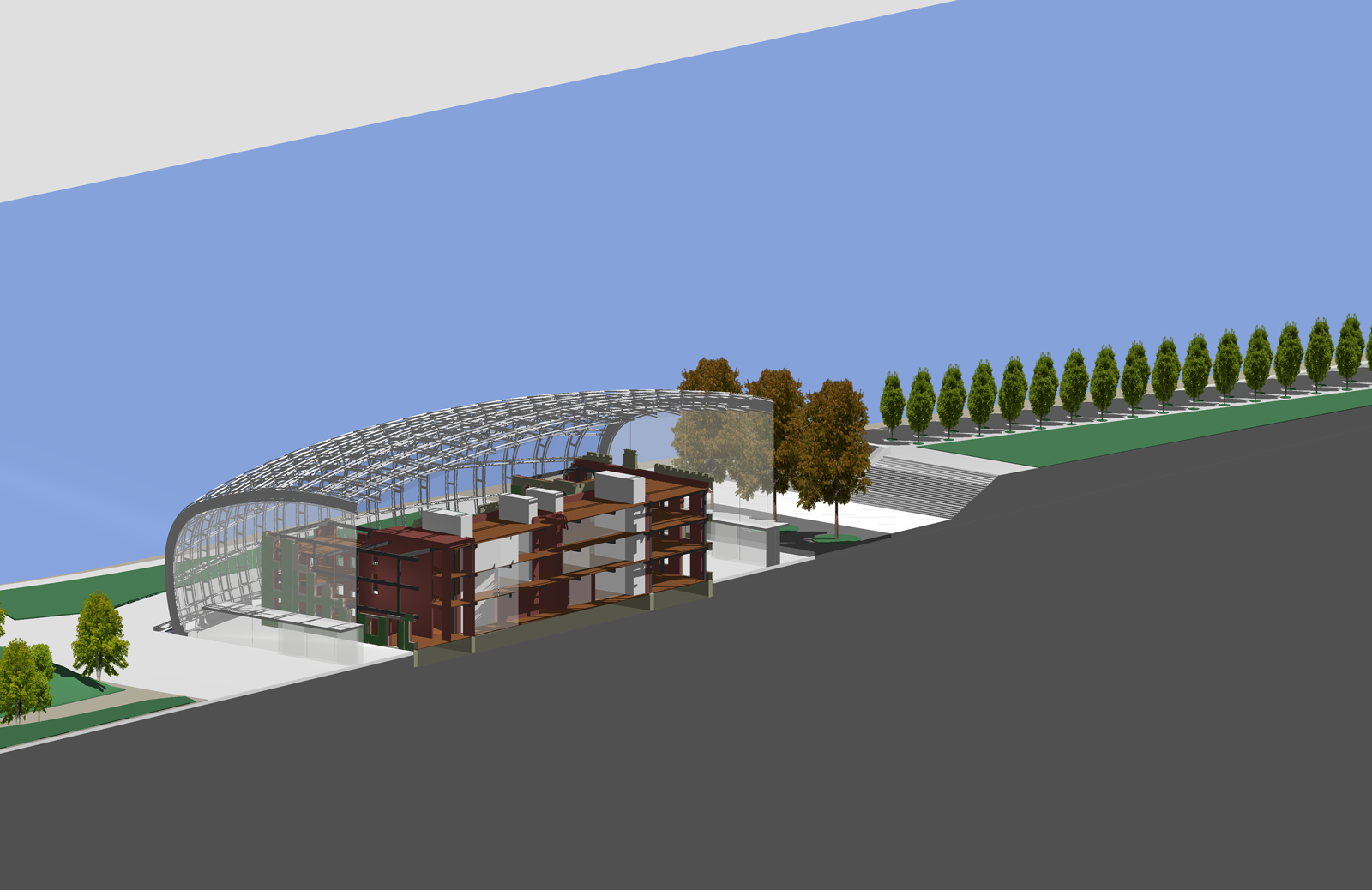
The enclosure is designed to provide a minimal surface around the Renwick hospital, while at the same time establishing a new spacial condition
Ventilation is introduced through continuous ducts along the perimeter. A double skin creates an insulated boundary layer of air. Partial shading is provided by the presence of solar cells on the upper sides and top. The readily accessible river water will contribute to natural heating and cooling.
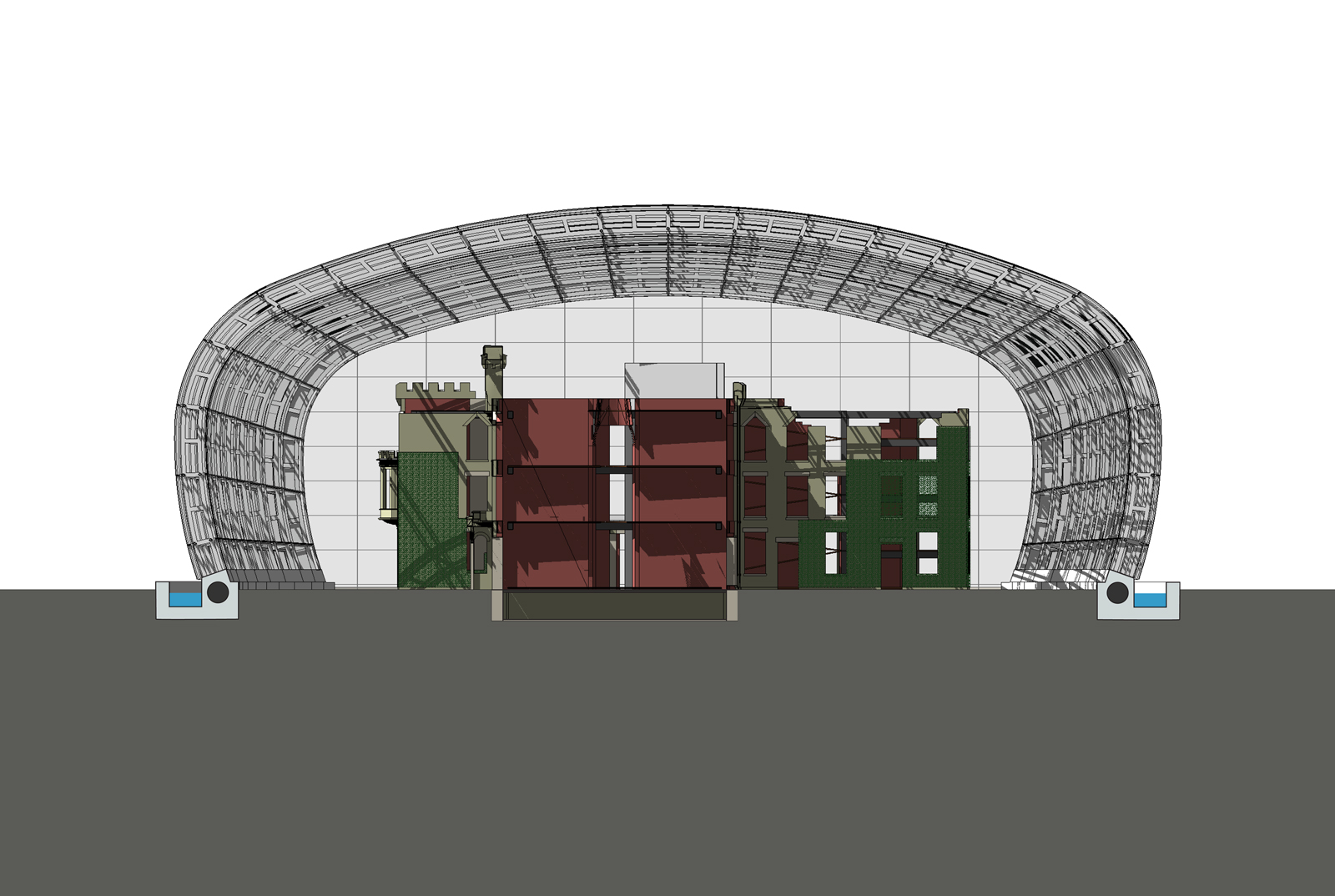
The enclosure is conceived as a lightweight, transparent shell. The double skin is made of ETFE, a material that is extremely lightweight and clear and offers UV and acoustic transparency. Thus the structure primarily supports itself. The top and upper sides of the outer layer of ETFE are printed with a graduated pattern of solar cells that generate power for the project.
The structure is constructed of curved Vierendeel trusses made of steel plate, keeping the cross-axial profile to a minimum and minimizing obstruction to the views from across the river.
The steel is supported on a continuous concrete grade beam that contains main ventilation ducts and forms an uninterrupted bench on the interior and water course on the exterior, in addition to acting as a flood barrier.
The end facades are constructed of clear cable-stayed glass. The end truss is doubled and perforated to create a boundary for exchange of interior and exterior air.
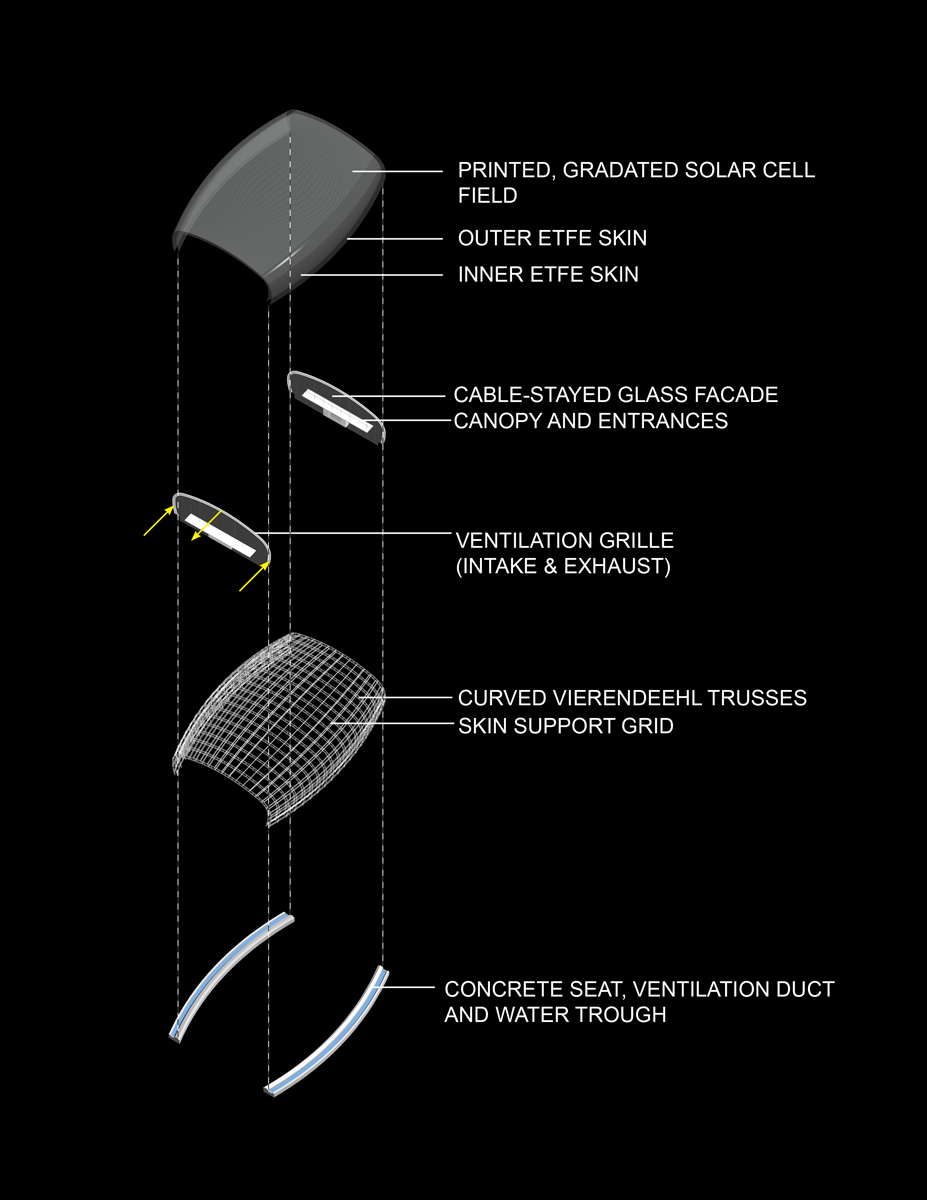
The ruined hospital is repurposed with the help of a steel frame that shores up the masonry structure and acts as a “scaffolding” supporting the new floors. The floors, made of timber, are set back in various locations to create multi-height spaces. Exit stairs and elevators are provided, and the south wing is designed as a ramp/gallery sequence, allowing for continuous vertical circulation through the galleries
Because of the abundant natural light, greenery can be introduced on the walls and within the building to create a garden-like environment. The ruin is thus both protected and put to a new use.
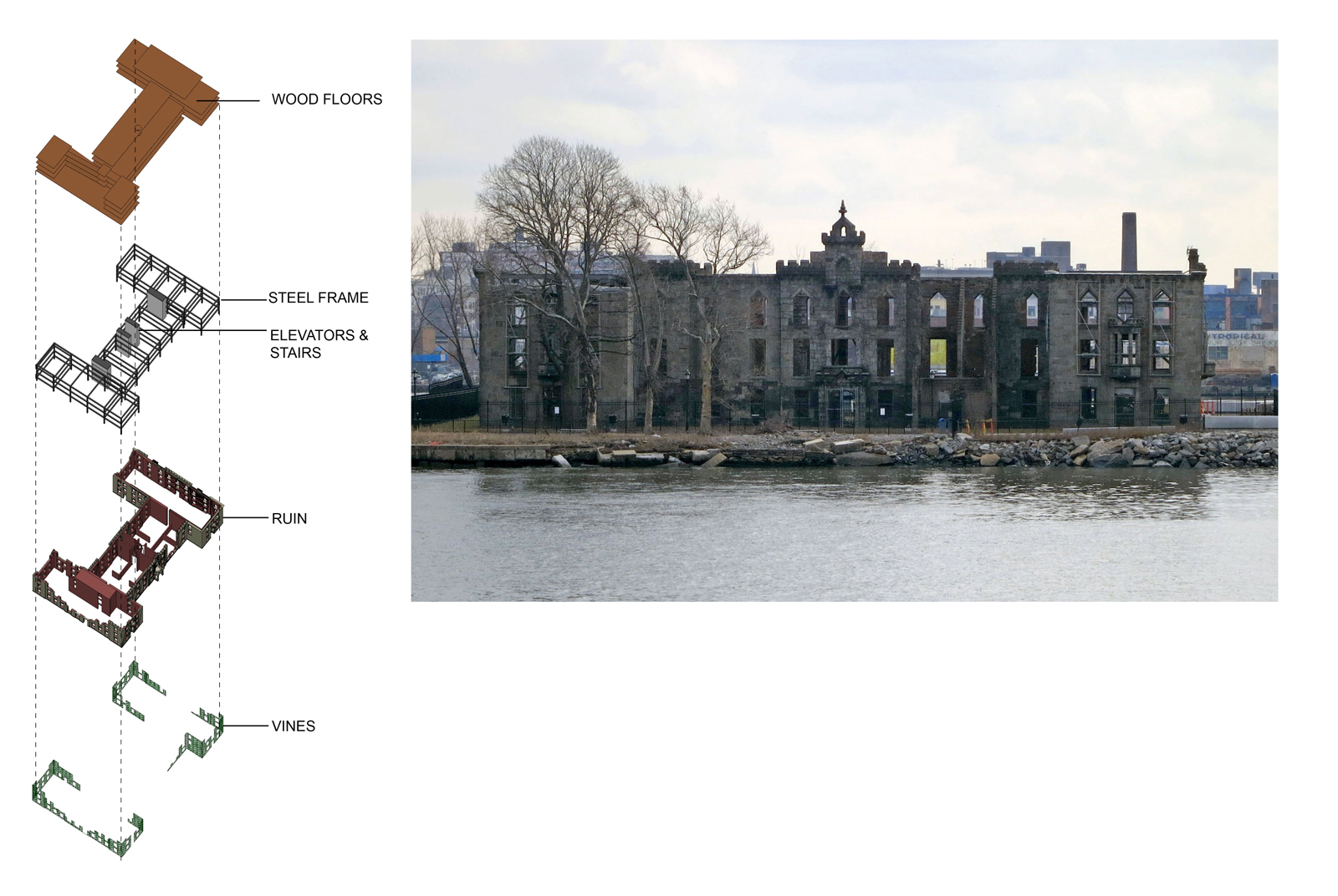
Exhibition space is layered throughout the building, linked by the ramp system on the north side facing Southpoint Park. The most public functions, along with those related to the Four Freedoms Park, are located on the ground floor. NGO offices are located on the second floor. Scholars' activities take place on the third floor, and the roof is reserved for exhibitions.
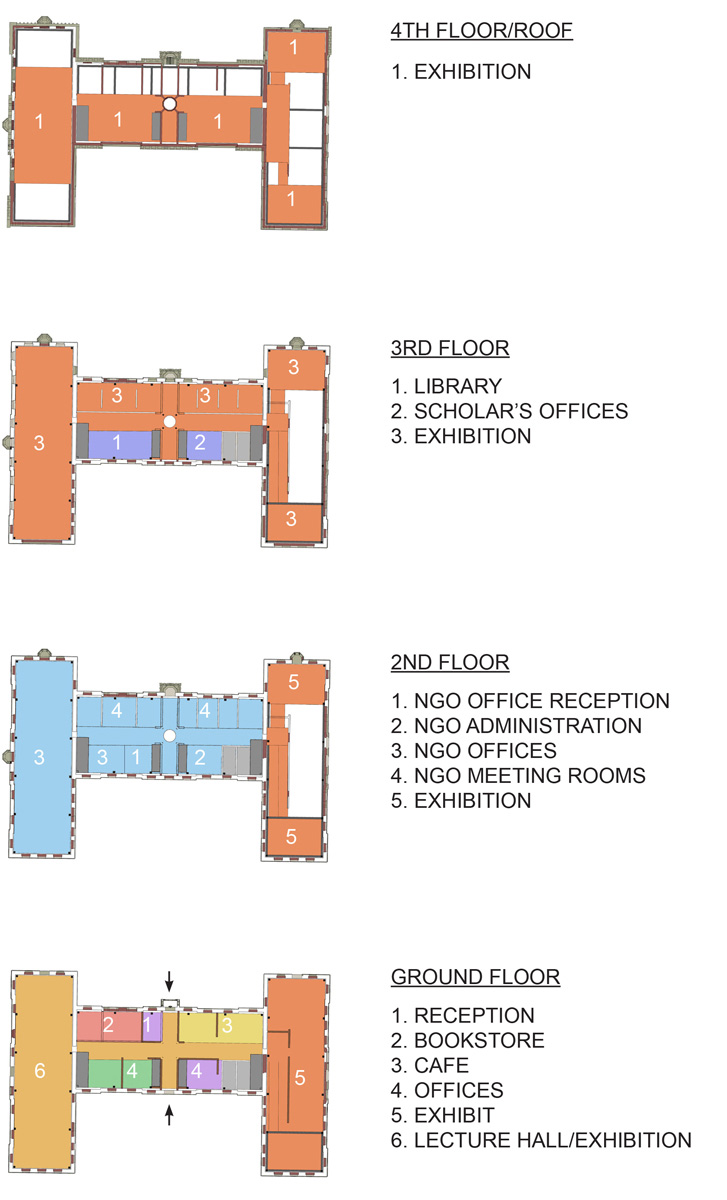
Center For Freedom and Human Rights
New York